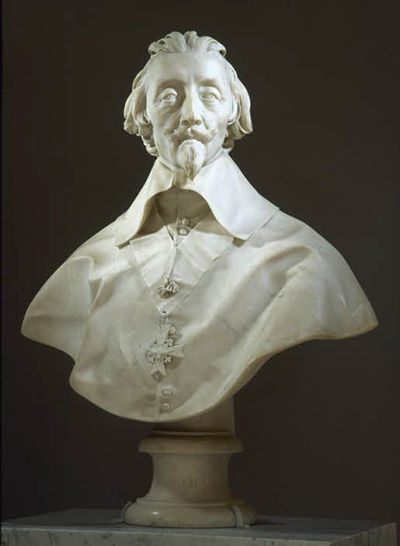 Buy Art Prints Now
Buy Art Prints Nowfrom Amazon
* As an Amazon Associate, and partner with Google Adsense and Ezoic, I earn from qualifying purchases.
Gian Lorenzo Bernini was a prominent architect and sculptor in 17th Century Italy. One of the many sculptures credited to him is the Bust of Cardinal Richelieu.
This is on display in the Louvre, Paris. As the foremost sculptor of the period, Bernini was a prominent figure in the Baroque style of sculpture. In 1640, Bernini received a commission to produce a full-size statue of the Cardinal de Richelieu, Louis XIII's chief minister.
In commissioning the figure, the cardinal needed to have the agreement of not just Bernini but also his select patrons. Bernini's patrons were Cardinal Antonio Barberini and his uncle, Pope Urban VIII. The Pope expressed a lack of enthusiasm for a full-size statue. As a result, Bernini suggested instead that he work on a bust of Cardinal Richelieu. In the end, work on a full-sized statue did not happen.
Bernini began work on the life-size bust in November 1640 and completed it in January 1641. Produced in Marble, the bust shows the cardinal as a prelate, displaying the Order of the Saint-Esprit. Bernini has provided the figure with a suitably grave and noble air that befits the cardinal's role.
Rather than travel to France, he undertook the work in Rome. In producing the bust, he did not have the benefit of Cardinal Richelieu sitting for him. Instead, Bernini worked from images sent to him from France. One of those pictures used for the sculpture may have been the Triple Portrait of Cardinal de Richelieu by Philippe de Champaigne. In August 1641, the completed work arrived back in Paris. While there was praise for Bernini and his work, the bust may not have been as well-liked as thought. This may account for why Richelieu had the French sculptor, Jean Warin create another bust.
By the end of the 1600s, the whereabouts of the bust were unknown. It remained this way until 1786 when the bust again resurfaced. Records show that it was, at that time, listed as being at Notre-Dame. Despite its listing, there was no name for the creator of the work. It was seven years later when the sculpture reappeared in the Musée des Monuments Français. The listings for the sculpture showed it as being one by Coysevox. It wasn't until 1910 when research re-established that the bust was by the sculptor, Bernini.
The Bust of Cardinal Richelieu is modelled in the Baroque style. The baroque style of sculpture takes its inspiration from the statues of ancient Rome. Bernini was a leading figure in sculptures of this style. As a result of the patronage of Pope Urban VIII, Bernini produced a series of notable statues for the Vatican. In line with the baroque style, his works show faces and gestures that strongly express their emotions. Many consider his works to be exceptionally realistic and highly decorative.




